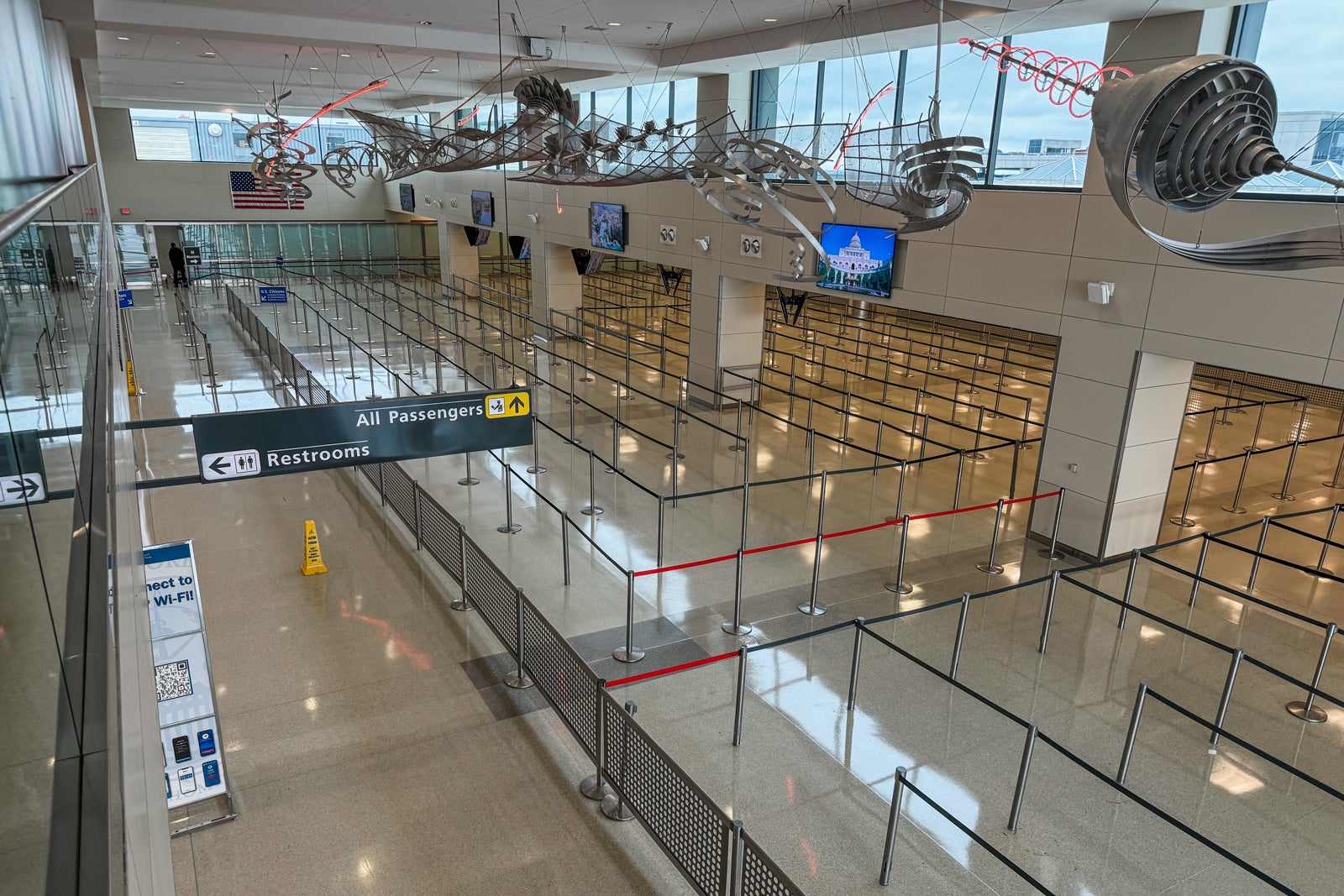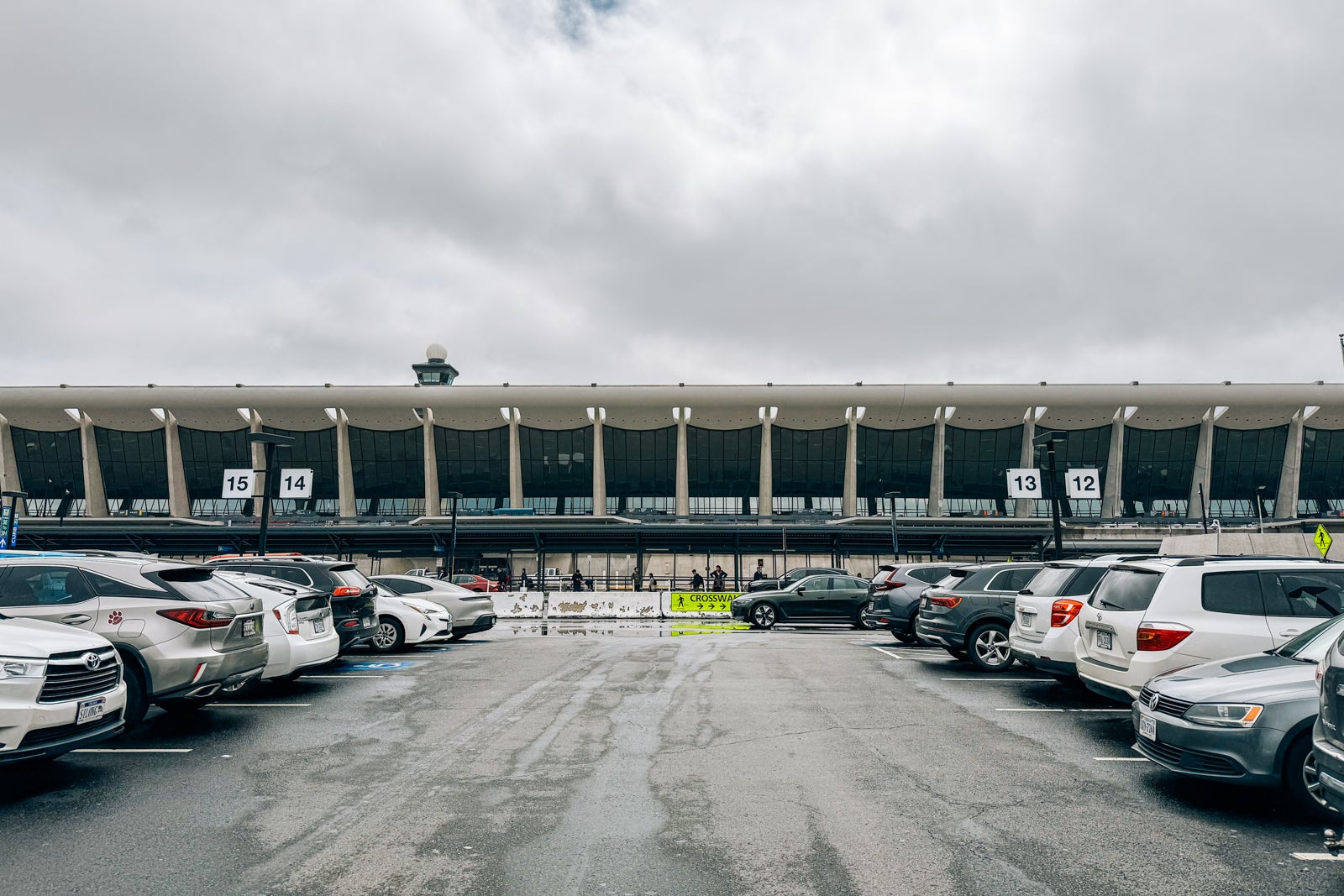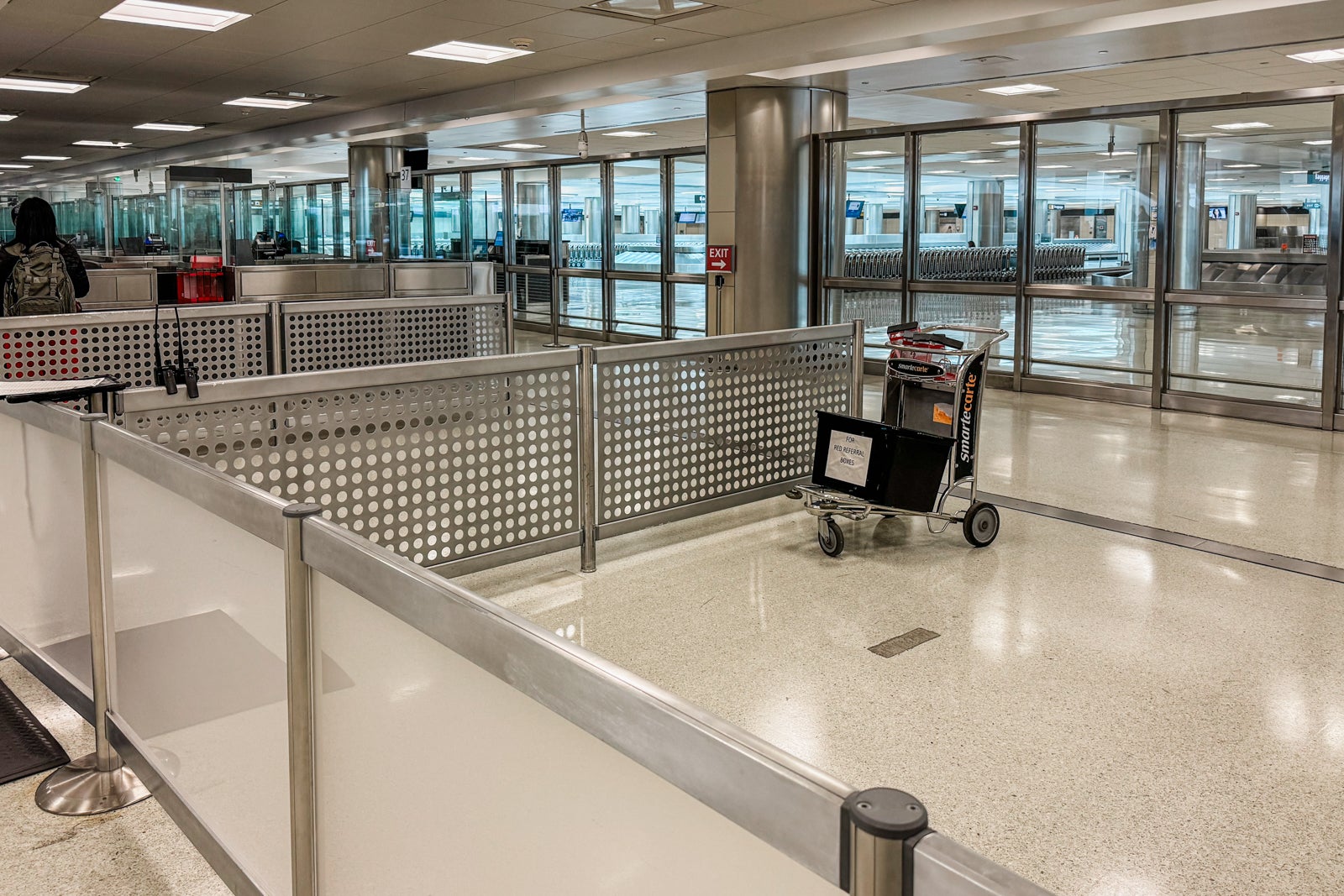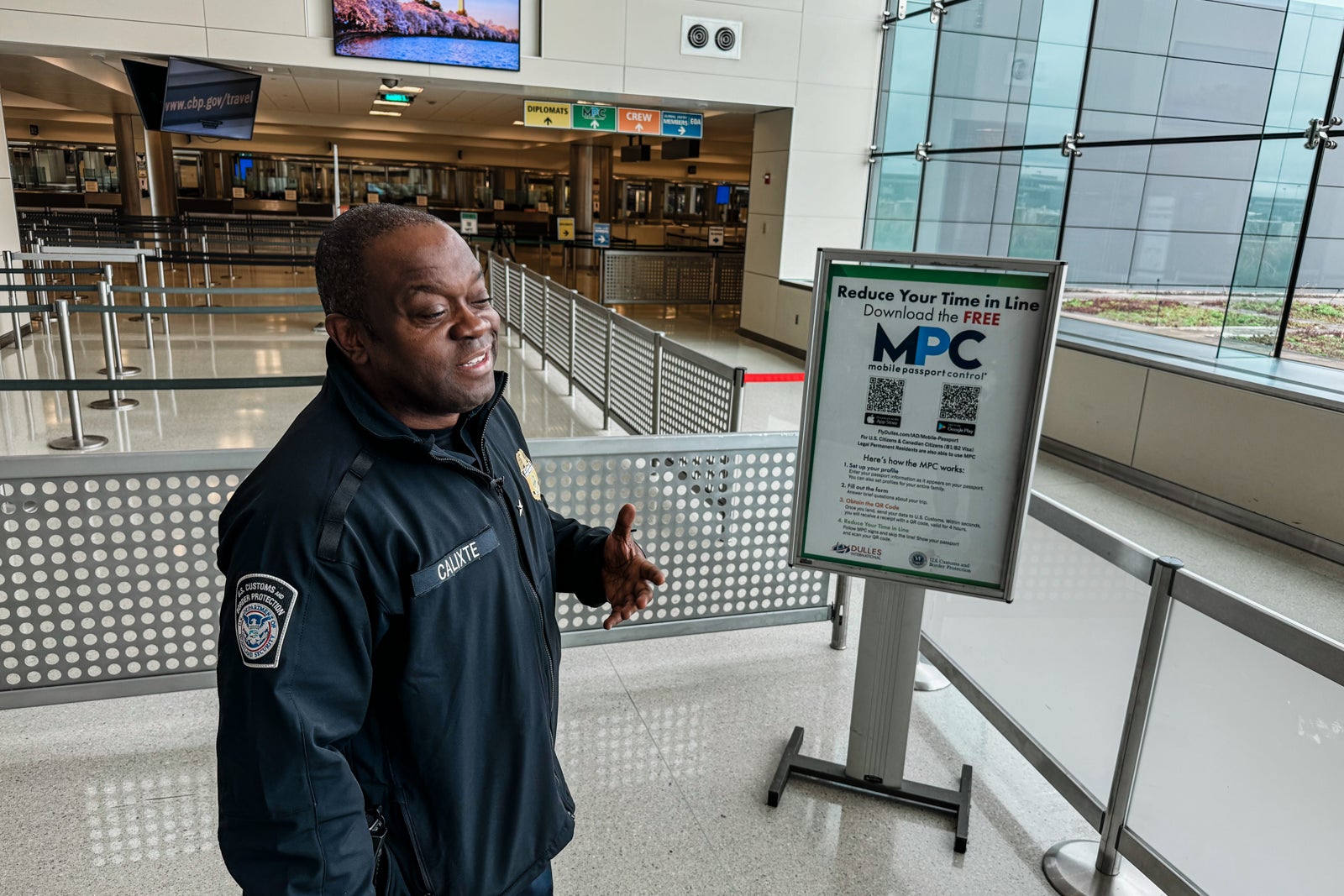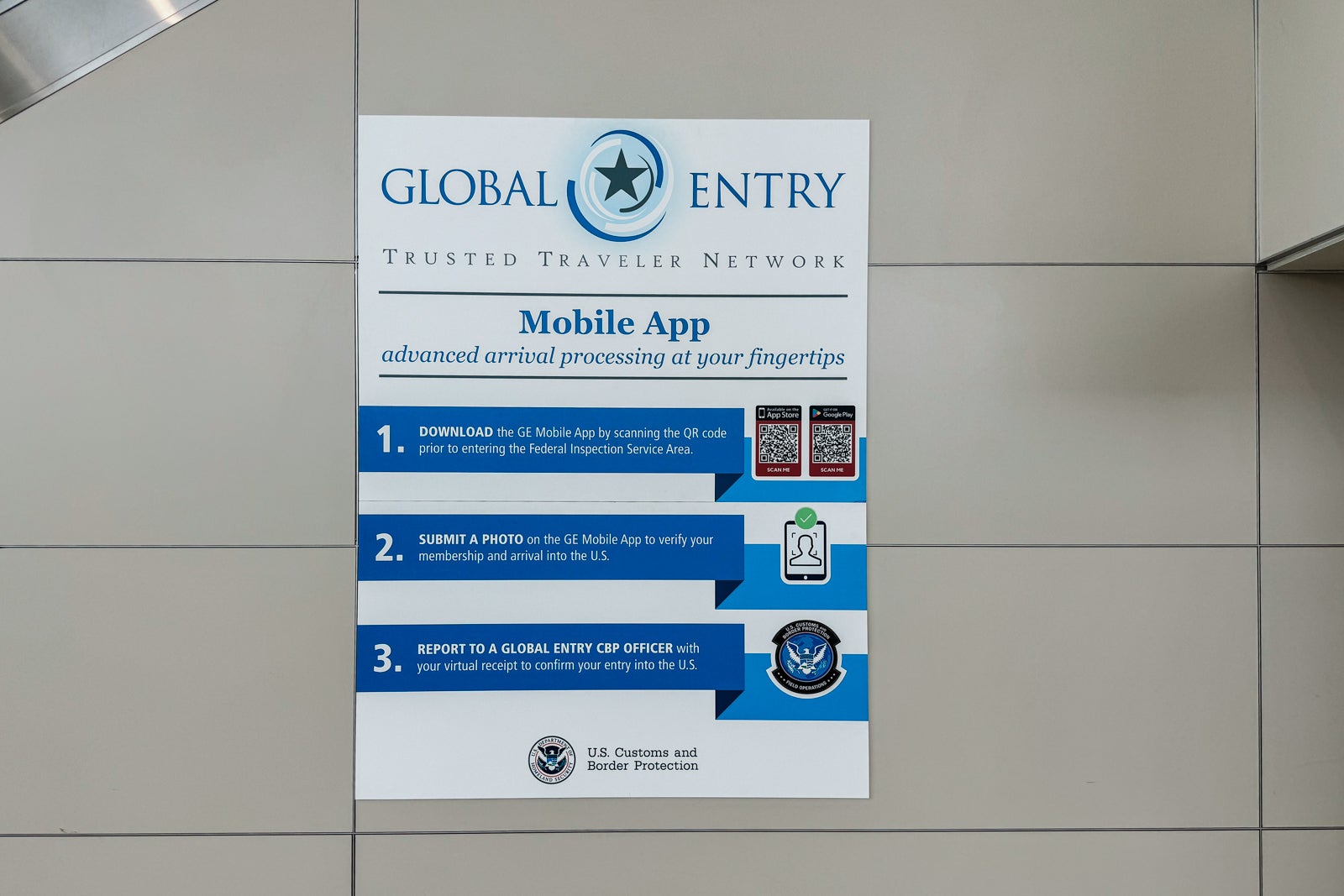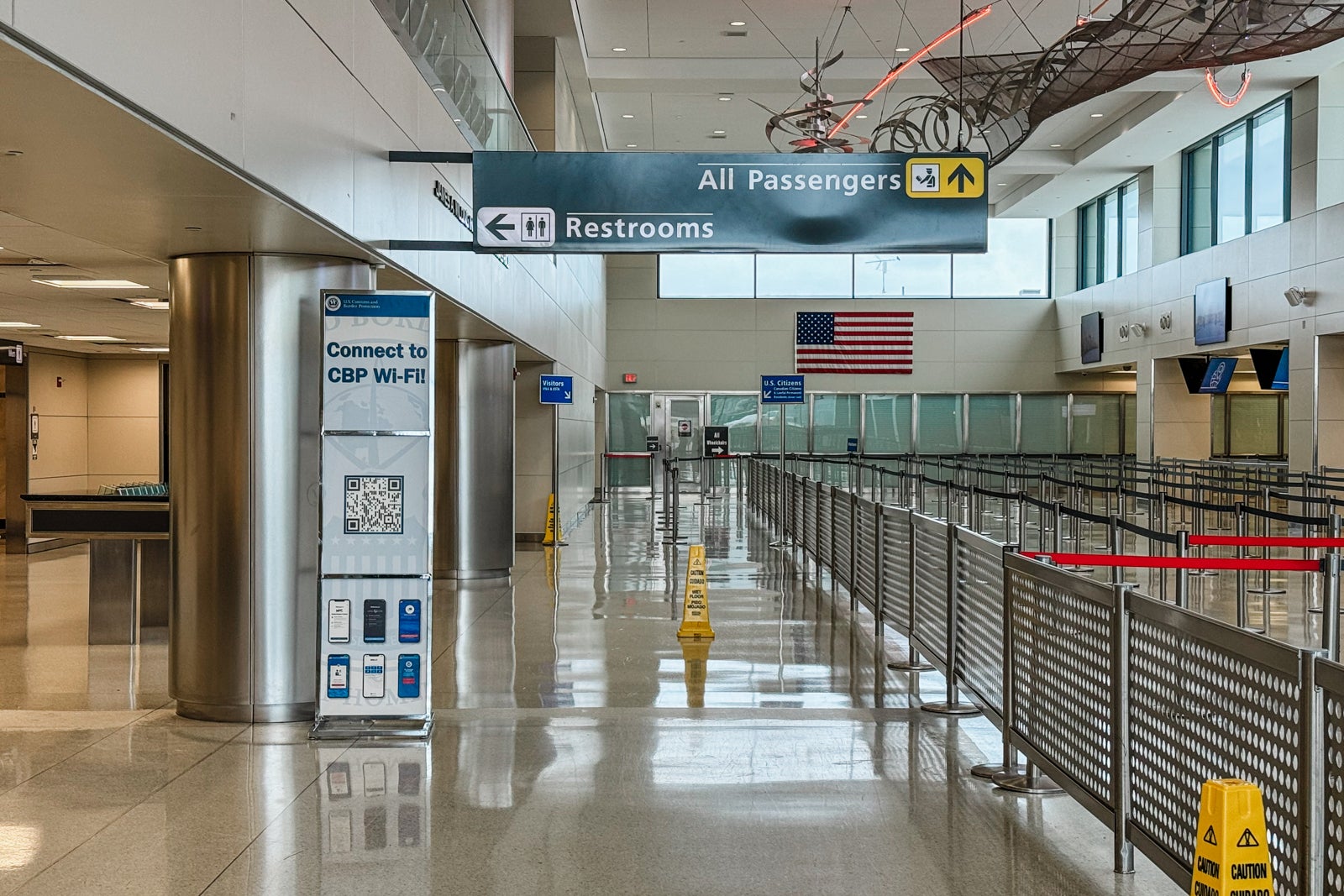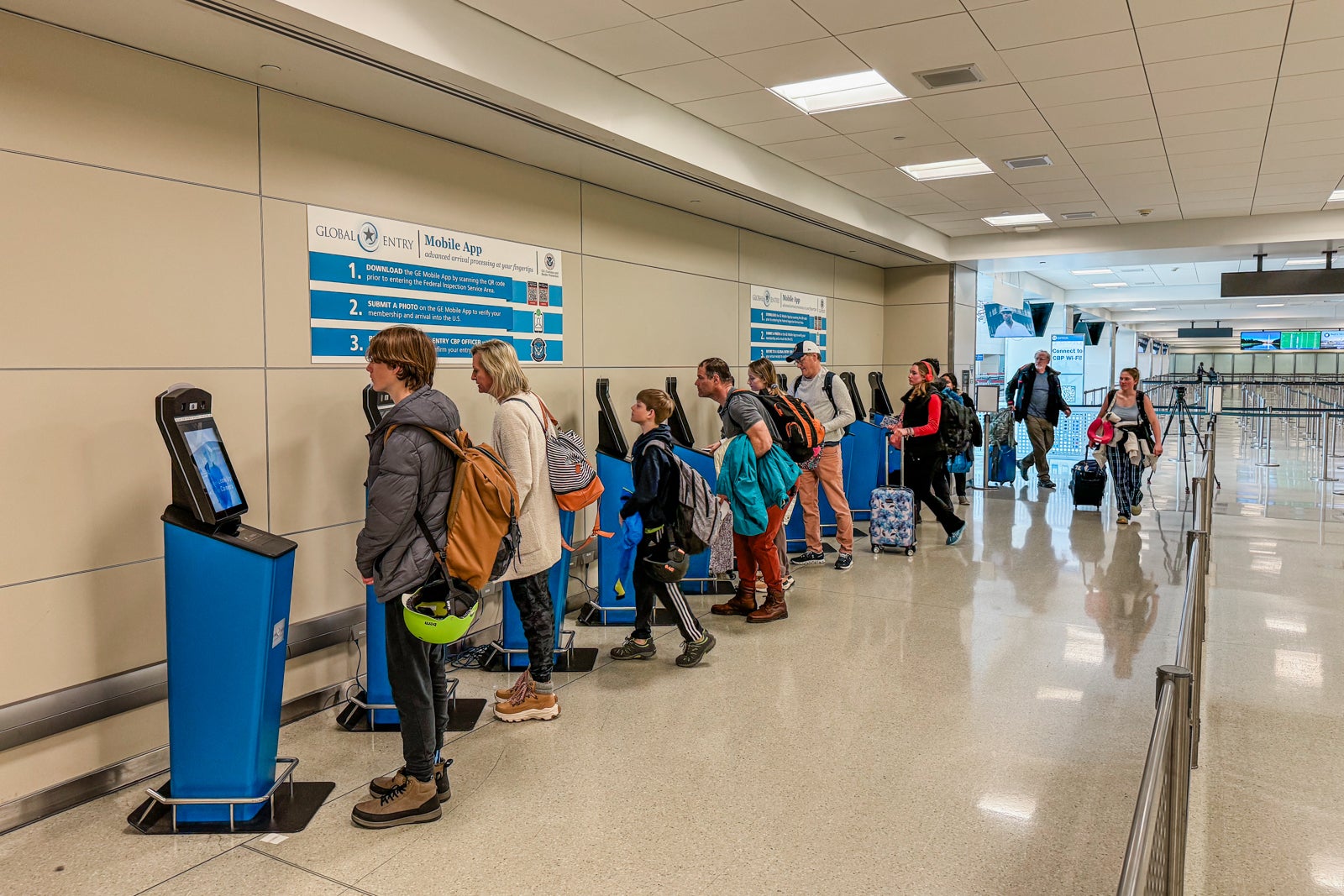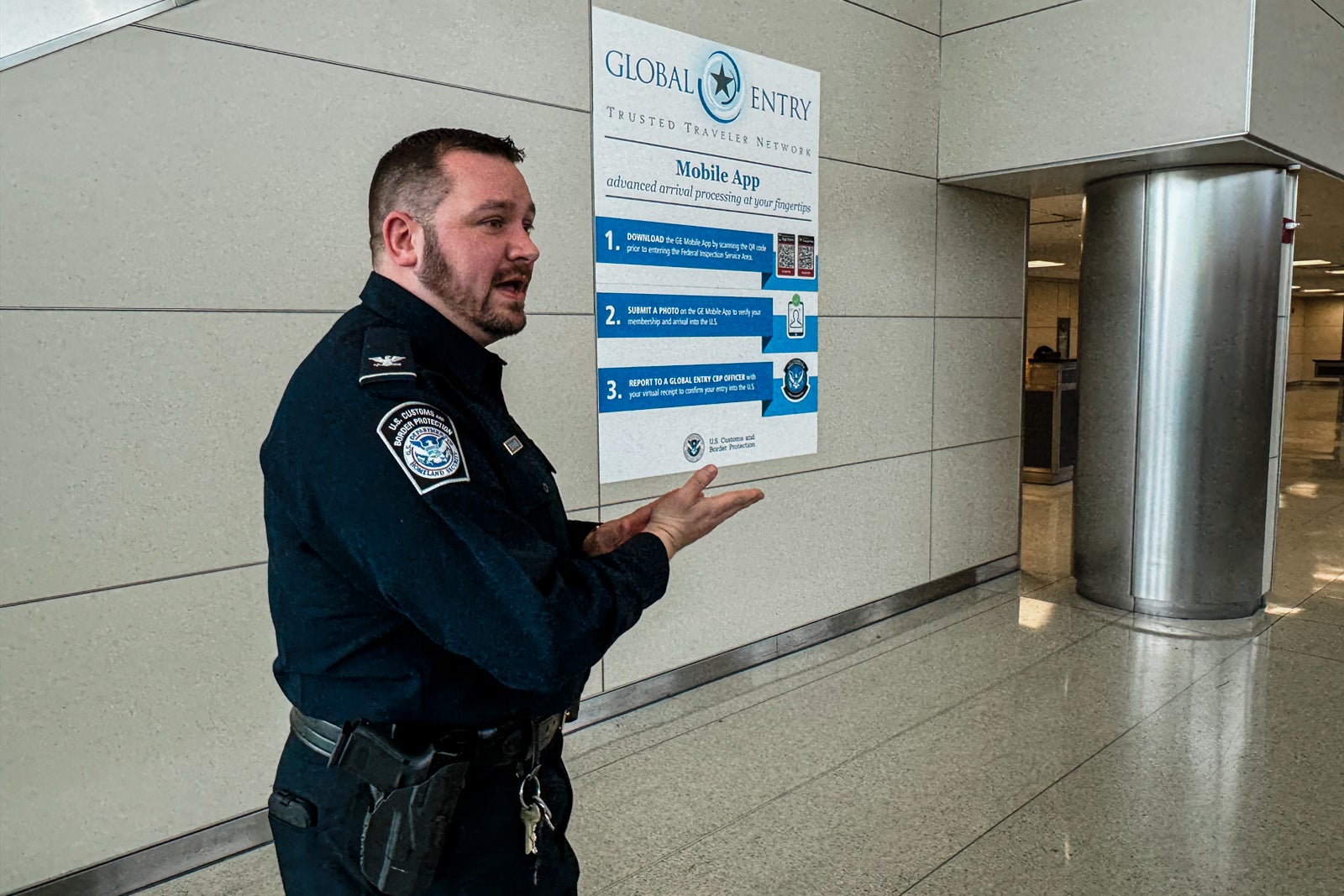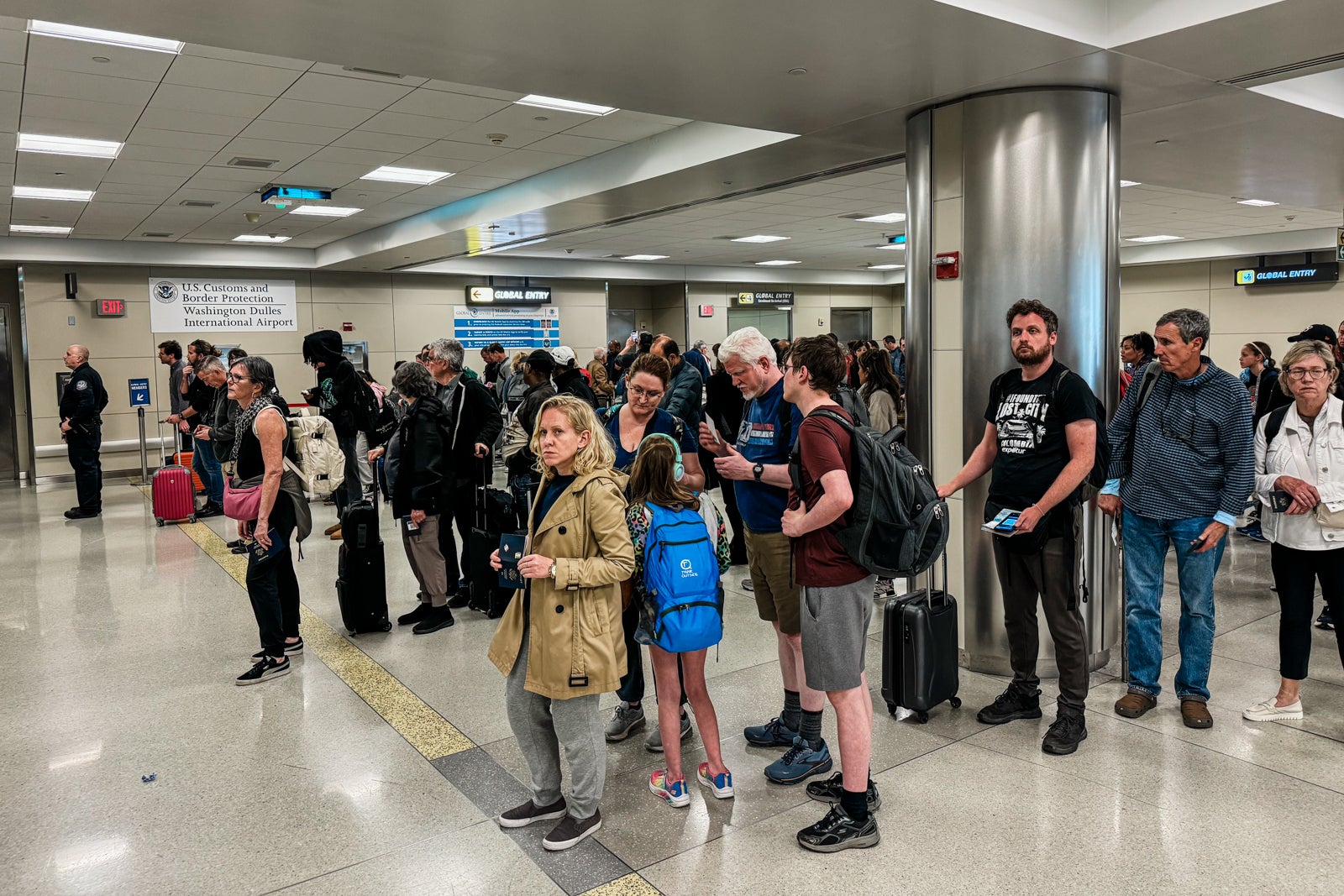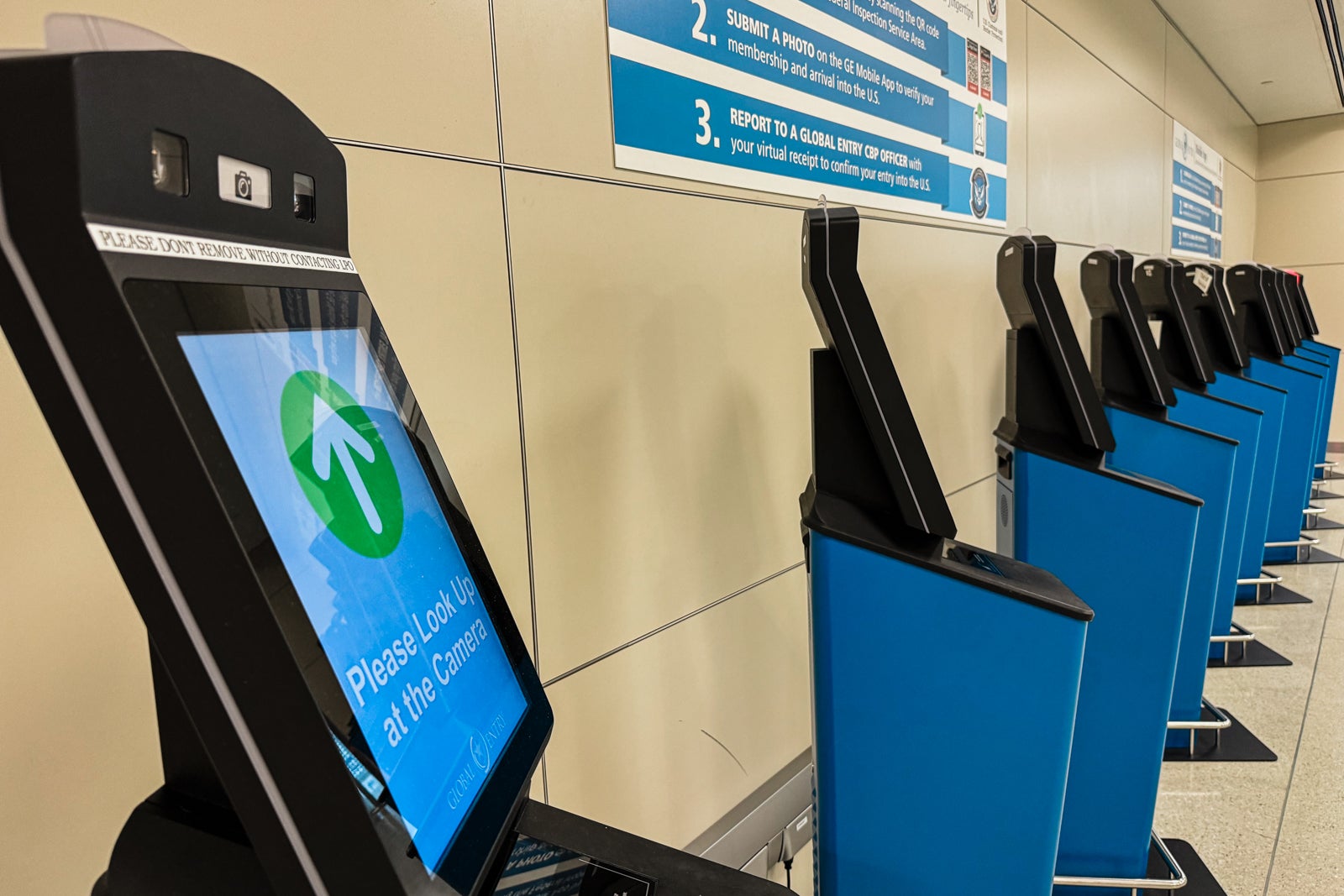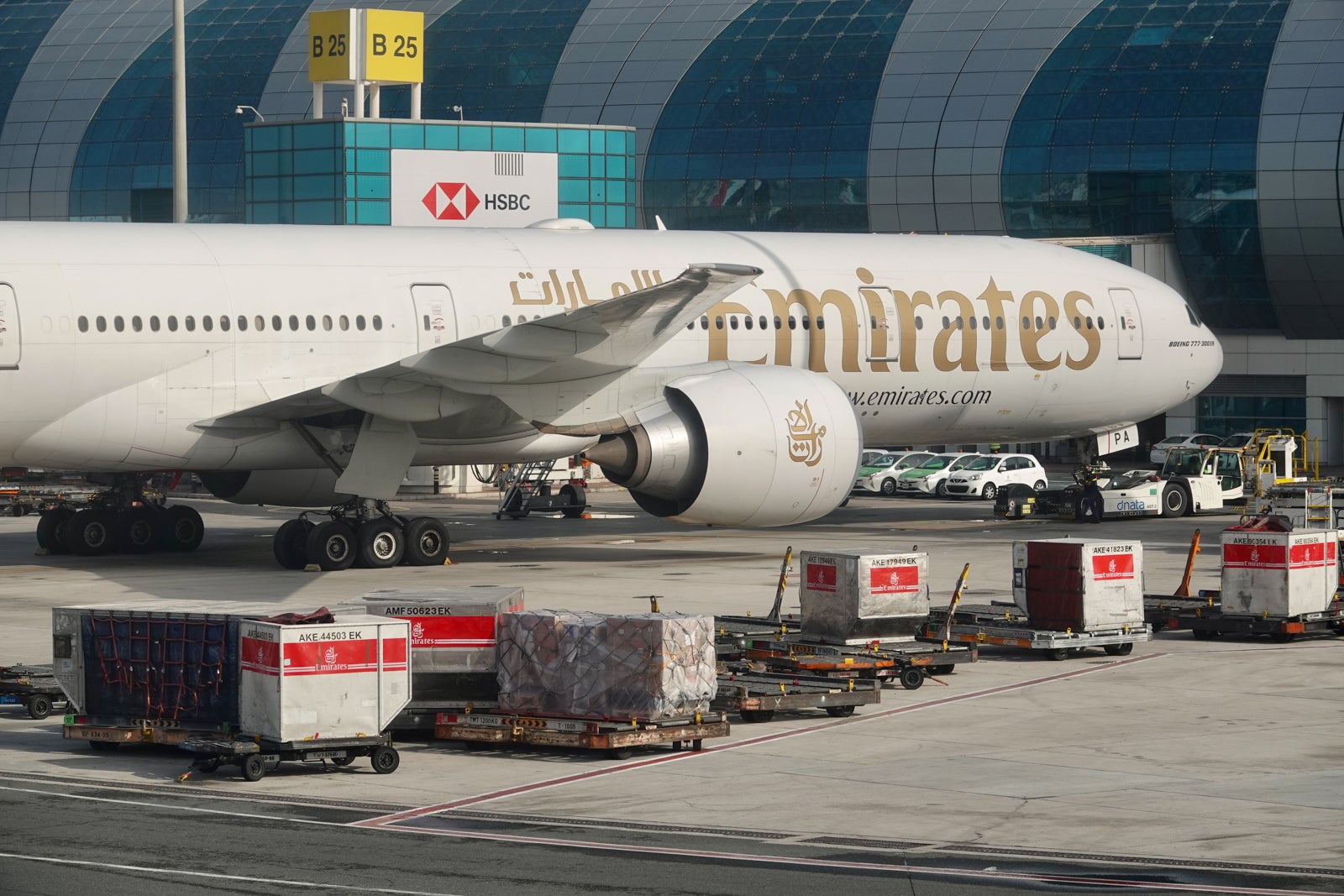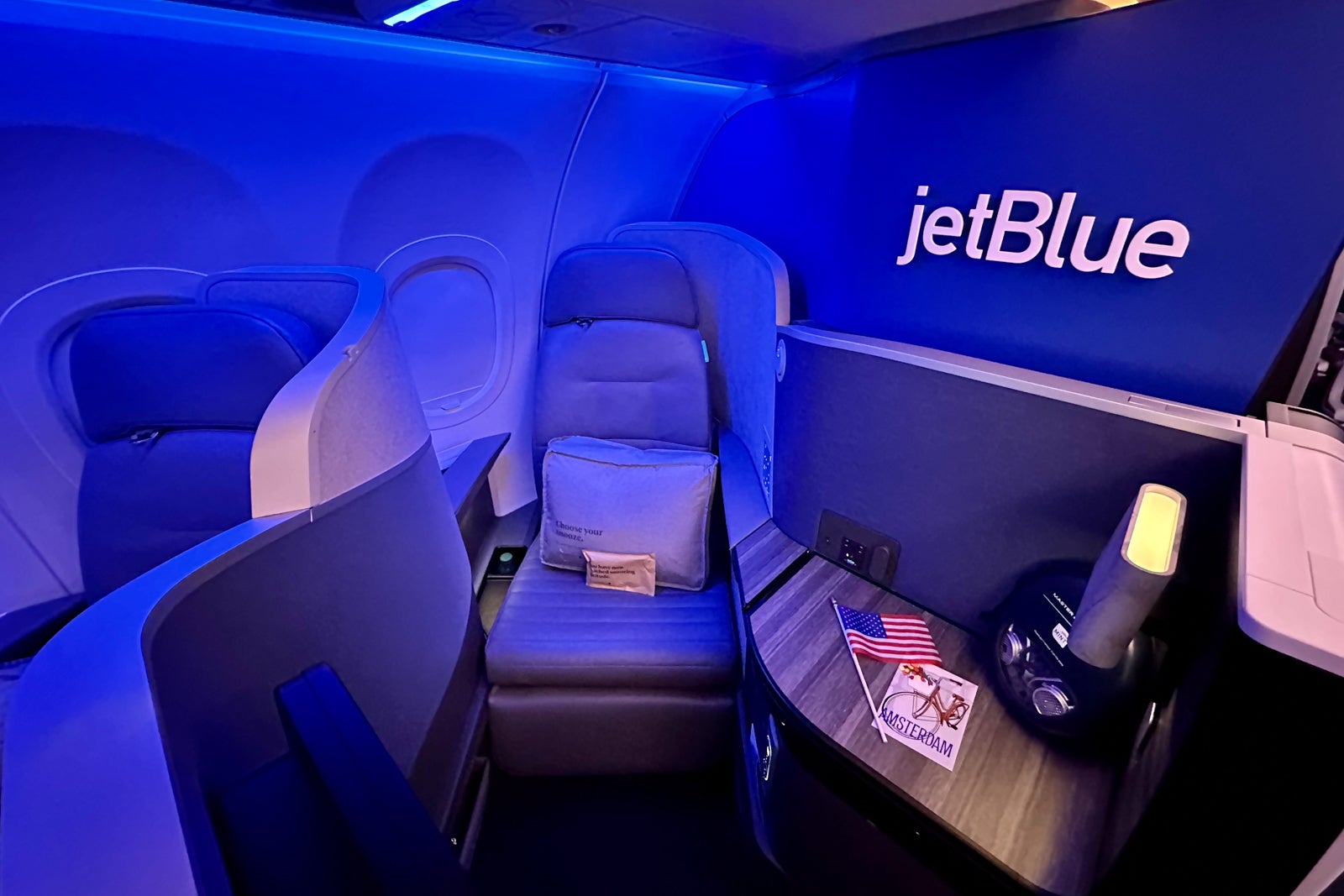Global Entry ‘e-gates’ are coming to a major airport. It could help set the stage for a kiosk-free future
Dulles International Airport (IAD) outside Washington, D.C., is set to test first-in-the-nation technology for Global Entry, allowing certain travelers to pass through customs without ever interacting with — or even passing by — a human officer.
In the coming months, Dulles plans to launch a pilot program testing the use of so-called e-gates at customs.
The new, high-tech process would work in concert with the recently launched Global Entry mobile app, allowing members to handle nearly every aspect of passport control and customs declaration on a smartphone, before proceeding to state-of-the-art gates that would open following a quick facial scan.
Want more aviation news? Sign up for TPG’s free biweekly Aviation newsletter.
More broadly, it’s part of an evolution for Global Entry that could, in the not-so-distant future, render the program’s signature kiosks virtually obsolete in favor of newer, higher-tech options, a top U.S. Customs and Border Protection official in charge of the program tells TPG.
“The reality is everyone’s moving to their phone — it does everything,” said Brendan Blackmer, CBP branch chief focused on Trusted Traveler Programs. “We do see, long term, that’s the platform.”
Pilot program at Dulles
Walk into Dulles’ customs facility right now, and among the 44 lanes at passport control, you’ll find a bit of an empty space where it appears booths should be.
As nondescript as the space looks, it’s the epicenter of some big plans CBP has, Dulles port director Marc Calixte explained during a tour of the facility Monday.
CBP is finalizing plans to install, at least temporarily, the new electronic gates at that spot. The agency is eager to test how well a process light on human interaction works — and whether it might be a model for its other airport facilities in the future.

Daily Newsletter
Reward your inbox with the TPG Daily newsletter
Join over 700,000 readers for breaking news, in-depth guides and exclusive deals from TPG’s experts
This is specifically intended to be a new option at Dulles for travelers enrolled in Global Entry, the fast-track Trusted Traveler Program that gives paid, vetted members an expedited trip through U.S. customs facilities (the program also includes TSA PreCheck access).
The Dulles pilot program is expected to launch by late summer, Calixte said — though an exact date has not been set. It’s also not clear how long the e-gates might be in use as part of the pilot.
The concept would integrate heavily with the new mobile concept CBP rolled out to Global Entry as an additional option for travelers last fall.
Integrating with Global Entry mobile app
Already today, you can skip the kiosks and proceed right to an officer by answering a few questions and snapping a selfie using the Global Entry app.
Launched in September, the app is now available at 38 U.S. airports and will be an option for travelers at nearly all of the 77 airports with Global Entry by the end of this year, CBP told TPG Monday.
Using the existing app, you can pull out your smartphone after landing, and while taxiing. You verify some personal information and capture a facial image for you and your companions. Location services technology (which is common on many apps) will confirm that you are, in fact, at the airport you’ve selected.
Once all of that information is submitted through the app and approved, you’ll get a mobile receipt — for you and any eligible companions included in your entry application. Under the current process, you take that receipt to an officer for a quick scan, and you’ll be on your way.
Where the ‘e-gates’ come in
That’s where Dulles’ new e-gates pilot program will come in, Calixte explained.
“Once you use the mobile application right now, you go to an officer and show your phone. We’ll now eliminate that officer interaction,” Calixte said. “You go straight to an e-gate. You show up in front of the e-gate. There’s a camera. It takes your photo … does facial biometrics … opens the gate for you, and you walk out.”
Security and safety still paramount
What if there’s some sort of wrinkle or complication?
“If for any reason we want to talk to you … we’ll stop you after the fact and talk to you,” Calixte said, noting that all stringent security processes would remain in place behind the scenes for each traveler, ensuring continued safety.
However, this innovation could allow the agency to focus its human agents more on expediting and improving speed and security for the standard customs lanes, centering their attention on travelers less known to the U.S. government.
A heightened focus on the app
This new Global Entry e-gates concept at Dulles helps answer a question some travelers — myself included — have had about the program’s mobile app since it rolled out last fall.
It’s clearly a handy new option, yes.
But at times, it’s felt unclear what its true purpose is. After all, the more traditional Global Entry process remains incredibly fast and convenient.
Most members have their identity verified within three to five seconds, the agency tells TPG. That’s thanks to its new generation touchless, paperless kiosks first deployed in 2022 and fully launched last year, which confirm a traveler’s identity with a quick photo; there’s often no need to even pull out a passport.
Talking with CBP on Monday, I pointed out that, on many of my recent Global Entry experiences, I’ve barely even stopped walking, because the process is so fast.
“The portals are great,” Blackmer acknowledged. “But the app will be a foundation for, potentially, other travel initiatives that we can do.”
Indeed, the app may not seem like much of a shortcut right now (though the agency insists it is, already, for families and other large groups). But at CBP, it’s viewed as a critical piece of the future of Global Entry.
The e-gates technology planned for Dulles is a key example of how the app will play into future innovation. So is “smart queuing” technology that, Blackmer says, CBP is “close” to moving forward with.
The latter innovation would help the agency sort travelers into a wider array of lanes to try and speed up the process: By analyzing information a member submits through the Global Entry app, a member would be directed to a specific lane based on the complexity of their situation.
For instance, someone who needs to talk with an officer about an item they’re declaring at customs might go to one lane, while a member with no declaration might be able to go through another. Even with Global Entry’s speed today, such situations can still cause bottlenecks.
“Based on that information, it will tell you which lane to show up to,” Blackmer said. “For people who don’t have anything, you’re not waiting behind that someone who … needs to spend a minute or two with that officer.”
Could kiosks someday be a thing of the past?
Again, the e-gates test planned for Dulles later this year is just that — a heavily planned experiment the agency is carrying out through collaboration with the Department of Homeland Security’s research and development arm.
CBP tested similar technology at Dallas Fort Worth International Airport (DFW) a few years ago, but bottlenecks ensued when complications caused the automatic gates to not open for some travelers. The agency believes the upcoming pilot program’s integration with the Global Entry app will prevent such snafus.
It’s also worth noting that though the technology is new to the U.S., similar concepts are used elsewhere in the world, from Canada to Europe.
The U.S. Travel Association last year publicly implored the U.S. government to increase its agencies’ use of biometrics at airport security and customs facilities, arguing the nation’s airports have fallen behind others abroad.
Still, it’s clear change is abound for the Global Entry program, owing to technological improvements that, in the coming years, might make even these brand-new kiosks all but a thing of the past, Blackmer said, standing in the Dulles customs hall.
“These are still going to be around in numbers for the short term — we just bought them — for five years, at least,” Blackmer said, motioning to the less-than-2-year-old devices.
And the agency will always need some kiosks, for travelers who don’t have a smartphone or aren’t comfortable with the technology.
But make no mistake: CBP sees the app as the future of Global Entry.
“One day,” Blackmer said, “these [kiosks] are going to be the backup, and 95%, 99% of people will be using the app.”
Related reading:

